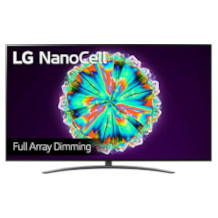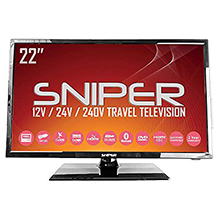80-inch TV purchasing advice: how to choose the right product
- What you need to know
- TVs with a screen diagonal of 80 inches or 203 centimeters are particularly interesting for movie fans.
- Two screen technologies dominate the market: While OLED scores with strong contrasts and short response times, there is no risk of burn-in with QLED.
- 4K or UHD quality is now standard. However, you will have to dig deep into your pocket for future-oriented 8K.
- Pay attention to which connections you need: There should be enough HDMI ports available. Bluetooth for wireless headphones and speakers is not a matter of course.
Great cinema?
TVs with a screen diagonal of 80 inches, which corresponds to 203 centimeters, are not automatically suitable for everyone. First of all, you need enough space in the room where you want to put the TV. This applies both to the width the screen takes up and the general size of the room – after all, you want to sit at the appropriate distance from the screen to enjoy its full dimensions. The rule of thumb here is roughly the screen diagonal in meters times 1.5. For 80-inch monitors, this means a distance of around two and a half meters.
An 80-inch TV is especially designed for movie lovers who want to set up a home theater in their own four walls. Movies unfold their full effect on such a scale and with high picture quality as standard for such screens. If you want to immerse yourself in the full movie experience, you might also want to invest in an appropriate sound system. For this reason, too, a larger room is recommended.
This is what matters when buying
Display technology, refresh rate, resolution – the selection of a suitable TV is not done with the screen diagonal alone. If you want to keep an overview here, you should be familiar with some technical terms and technical values.
Display technology
Anyone considering the purchase of a new TV will be confronted with a number of technical terms and acronyms – starting with the technologies on the basis of which the displays work. LCD, LED, OLED and QLED are the most common types of 80-inch TVs. Micro-LED is also on the rise, but currently still a thing of the future for 80-inch devices.
LED or LCD
The abbreviation LED stands for “Light Emitting Diode” and can be found in various areas where the economical light sources are used. The abbreviation LCD is sometimes used for televisions, which stands for “Liquid Crystal Display”. LED and LCD therefore refer to the same thing in this area. In practice, the liquid crystals in the screen are illuminated from behind by LEDs. The different colors are created by different light refraction. Compared to OLED TVs, LCD sets are significantly cheaper and more durable.
OLED
Organic light-emitting diodes(OLEDs) are a further development of conventional LED or LCD technology. They are particularly flat, can be multicolored and, above all, can light up independently. Since they do not need additional LED lights, OLED screensand TVs can be built significantly flatter and thus lighter. While LED TVs create colors by illuminating pixels through different light refraction, OLEDs switch off individually – creating a richer black. In general, this technology can display more intense colors and the image is evenly illuminated. Another advantage is that OLED TVsusually consume much less power than other models because the LEDs are dropped. For gamers, it is interesting that OLED TVsoften have a much lower response time than other technologies.
One disadvantage of OLED technologyis the risk of burn-in (burn-in effect): When light shines on the screen for a certain amount of time, still images may be burned onto it. As a measure against this, TVs usually have a screen saver installed that kicks in after some time when the picture is paused. Generally, components of OLED TVsare susceptible to external influences and therefore not as durable as other models. Generally, OLED displayshave a rather low brightness. This is especially noticeable when there is a window opposite the screen.
Advantages
- Flat screen
- Low weight
- Intense colors
- Strong contrast
- Energy efficient
- Short response time
Disadvantages
- Burn-in effect possible
- Comparatively dark
- Reduced service life
- Expensive
QLED
The “Quantum Dot Displays” (QLED) consist of nanocrystals combined with blue LEDs connected behind them. The difference to OLED is that it is a proprietary technology, while QLED is a further development of conventional LED technology. Depending on the size of the crystals, the LEDs light up red, green or blue, which in turn makes up the image. This technology allows for an extremely rich and brilliant color representation that does not diminish even at increased brightness. In contrast to LED or LCD TVs, TVs with QLED are significantly more energy-efficient and consume up to 50 percent less power.
The advantage over OLED TVsis that there is no risk of burn-in effect here. The contrast values are a bit lower in return. However, due to the lack of backlighting, they are still significantly higher than conventional LED TVs. A unique feature of QLED TVsis backlight and local dimming, which some manufacturers offer on their models. This gives you the option to dim the screen or just individual parts of it, which allows for more intense blacks and smooth color transitions. Although the technology means that the TVs cannot be built as flat, they are often cheaper.
Advantages
- Intense colors
- Energy efficient
- No burn-in effect
- Backlight and local dimming possible
- Often cheaper than OLED
Disadvantages
- Lower contrast
- Built lower
- Higher response time
- Lower power
Micro LED
The next level of screen technology is Micro-LED, but so far it is only found in very expensive devices with a diagonal beyond 80 inches. Here, the visual standards of OLED and QLED are surpassed once again. There are even higher contrast and brightness values and the models are supposed to be much more durable. The image is generated by tiny LEDs made of inorganic material, of which there are three per pixel in the display – for an 8K device, this results in almost 100 million micro LEDs.
What is HDR? “High Dynamic Range” – HDR for short – is a technology that can be available on both OLED and QLED TVs. This makes colors and contrasts more vividly expressed; details can be seen better in very dark or very bright images. However, the option to use HDR is only available for some streaming content as well as UHD Blu-rays.
Resolution
Consumers are also confronted with some technical terms and abbreviations when it comes to screen quality. The most important in this area are Full HD, UHD or 4K, and 8K. The former refers to a resolution of 1,920 x 1,080 pixels and should be the minimum standard for you when buying a new TV. Many TV programs are broadcast in this quality, so Full HD is already a good choice for everyday TV viewers.
UHD or 4K has also been standard on TVs of all sizes for many years, especially in a format like 80 inches. Often the terms are used synonymously because the image sharpness is the same. Technically, however, the format differs: UHD offers exactly twice as many pixels as Full HD, namely 3,840 x 2,160, which corresponds to a 4:3 format. 4K is rather used in the cinema or film sector, since a different format of 16:9 prevails here. This brings “real” 4K to 4,096 x 2,160. Many movies on streaming portals and video games of the current generation rely on 4K, so a TV with this resolution is recommended for movie enthusiasts and gamers.
Even 8K – also called UHD+, i.e. 7,680 x 4,320 pixels – is now quite a common resolution among some TV manufacturers. However, the price here is usually several thousand Euros depending on the size and is thus many times higher than for UHD models. In addition, the range of 8K content is manageable so far. However, it is foreseeable that in the future, movies, video games and streaming content will also be available in 8K on a mass scale.
Frame rate
The unit Hertz (Hz) is used to indicate the so-called refresh rate. It tells how often an image is repeated per second. The higher the value, the smoother and more precise the image. Especially with fast movements you can see the difference between high and low values, for example between 240 and 60 hertz. A high frame rate prevents streaks and distortions in motion. When gaming, the advantage is reflected in a faster response time. Those who play first-person shooters or racing games on the screen will especially benefit from a high frame rate.
Television reception
There are several ways in which you can receive television programs. When buying a TV, pay attention to the type of reception for which the device is designed. Very common is DVB-T2 HD, with which you can receive TV channels via satellite; with a corresponding receiver that you can connect to the Internet, there are even more. In this way, you can also receive channels via the Internet with the IPTV reception mode and access the range of numerous streaming services. You can achieve the greatest variety of programs with DVB-S/2 satellite television. Digital cable TV is available via DVB-C access. Also, always be aware of what, if any, options are available in your home.
Sound
The speakers integrated in modern TVs are generally sufficient for everyday TV use and offer good stereo sound quality. Some also have built-in subwoofers that support deep bass tones and can shine especially in movies and video games. If you value realistic sound quality that makes movie and gaming experiences even more immersive, you should rely on additional gadgets. A soundbar, for example, has many small speakers pointed in different directions that distribute the sound around the room, so to speak. Even more effective is a sound system with several stationary speakers.
Apps
Many TVs, especially in these large sizes, are SmartTVs these days. Connected to the Internet, you can use numerous apps to access specific content, such as YouTube, online offers from various TV channels, or streaming services like Netflix, Disney+, and Amazon Prime.
Connections
Make sure the TV has enough HDMI ports for devices like receivers, DVD and Blu-ray players, and video game consoles. USB ports are important if you want to connect external hard drives to play video or music files, for example. Smart TVs can be linked to the Internet with a network connection. However, these also have a WLAN connection. Via Bluetooth, you can pair the TV with wireless headphones or external speakers, for example. Soundbars and sound systems can be connected via additional audio outputs.
Energy label
Pay attention to the energy efficiency class, which are labeled with a letter from A (particularly economical) to G, keeping in mind that this classification was updated in March 2021. The original scale, which was launched from the mid-1990s, is no longer fit for purpose. Over the years, many manufacturers of electronic devices have adapted their products to become more and more economical and energy efficient. The best products were awarded A+++, so that the original best value A was at some point only mediocre. With the new scoring guidelines, A is the top score again. If you come across televisions – or other electronic devices – labeled A++ or A+++, these are still based on the outdated guidelines. A one-to-one conversion to the new scale is not recommended as the guidelines have become stricter. For example, what used to be A++ is now not automatically B.
Does a curved TV make sense?
A curved TV can be an attractive option especially for large dimensions, which definitely include an 80-inch screen diagonal. The idea behind this is that the curvature is adapted to that of the human eye. Thus, the distance of the eye to every point on the screen surface is exactly the same. This curvature makes the image content look even more realistic, since it is equalized a bit. The impression of three-dimensionality is enhanced and the image accommodates our viewing habits; the eyes are relieved. Especially when there is a lot of movement on the screen or you play video games with concentration, the effect becomes apparent. However, curved TVs require more space than other models, and they are also more expensive.
Hang TV on the wall
With an appropriate bracket, you can mount your TV on the wall. However, keep in mind that devices with these dimensions weigh around 30 kilograms. You will need a sturdy wall mount, which is usually not included, but is sold by many third-party vendors. Make sure that the mount is suitable for a TV with the correct dimensions. The TV model is irrelevant; the mounts fit all versions in the corresponding size.
Make sure that the wall in your house or apartment will hold the weight. Use sturdy dowels to attach the bracket. When positioning, make sure that the bottom edge of the screen is at about the same height as the viewers’ eyes.

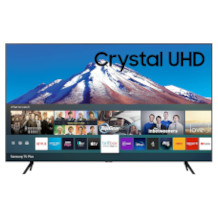
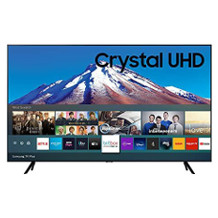
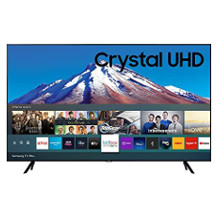
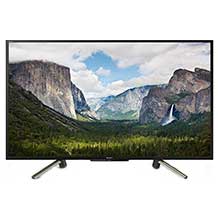
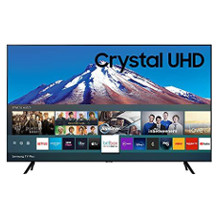
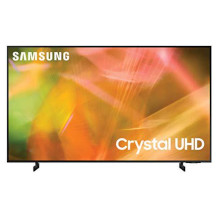
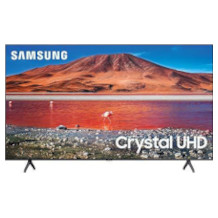
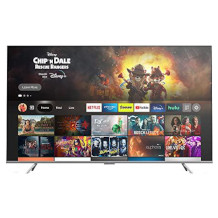

 1,022 reviews
1,022 reviews
